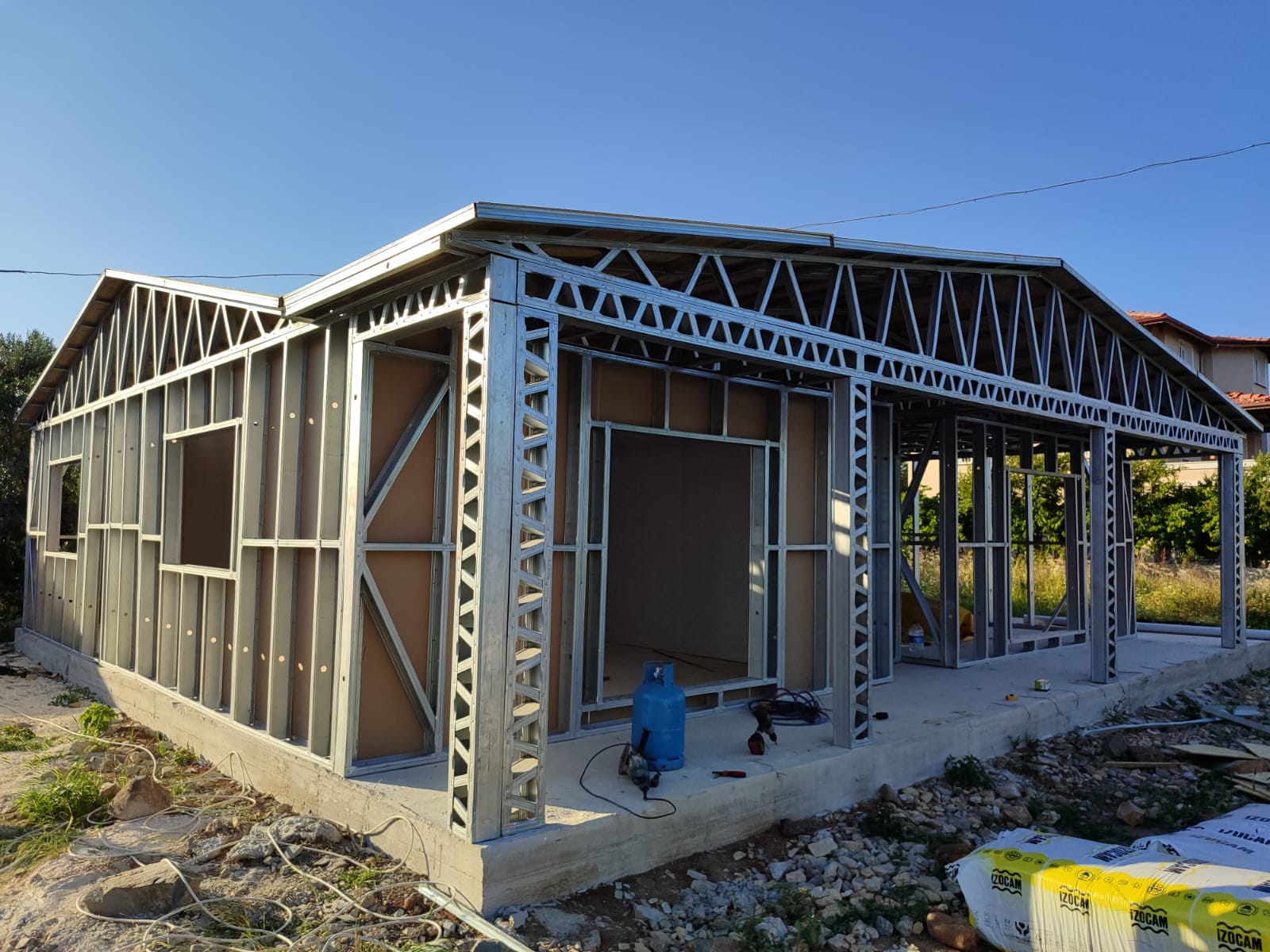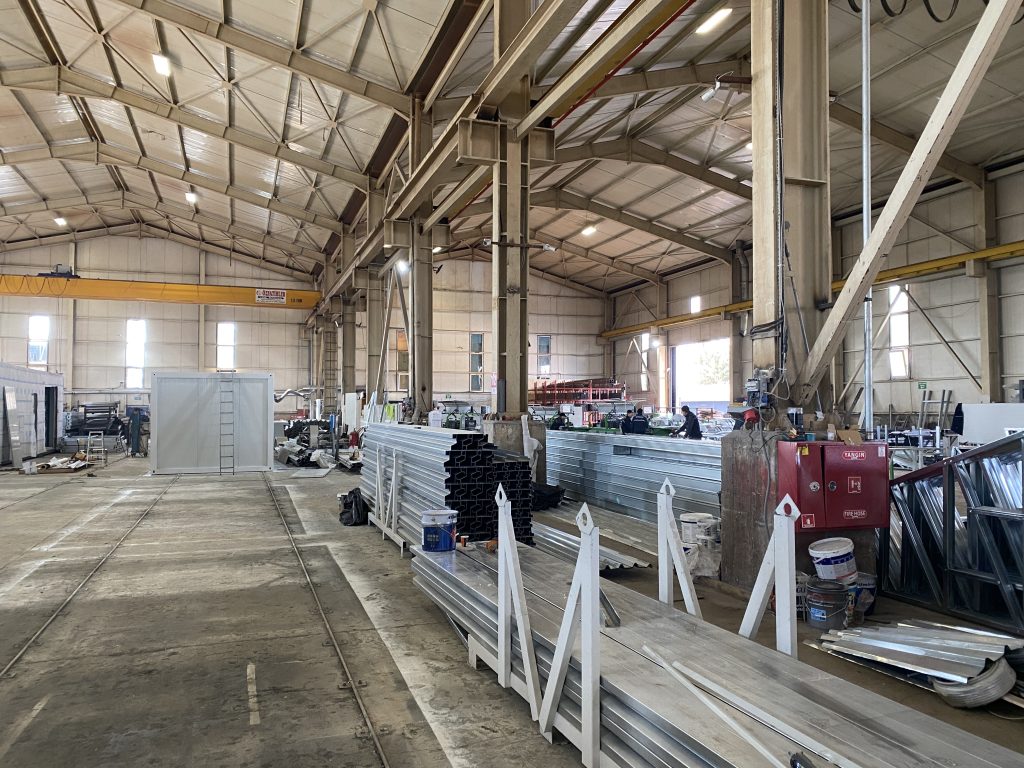- Heim
- / Leichter Stahl
Leichter Stahl

Lightweight Steel
The lightweight steel building system is a cutting-edge, robust, and flexible solution ideal for industrial construction. Designed with unique architectural and engineering solutions, most components are pre-produced in a controlled factory environment. Wall, roof, and insulation values are precisely calculated to match the specific climate conditions of the region.
This innovative system has quickly gained popularity worldwide due to its numerous advantages. Introduced to Turkey in 2000, the lightweight steel building system has been embraced by both public and private sectors, as well as individual users. In 2008, we created a comprehensive 350-page Architectural Detail book focused on steel building systems. This guide covers all aspects, including roofs, walls, and mezzanine floors, with various material options tailored for four different climate zones in Turkey. Regular updates to this guidebook assist architects, engineers, and practitioners in monitoring production processes and resolving details at the project stage, reducing uncertainties and minimizing errors during implementation, ensuring accurate project execution in the field.
The lightweight steel building system is suitable for constructing houses up to three floors, adhering to the 2018 earthquake regulations. It can also be used in mixed systems, combining lightweight and structural steel, for multi-storey buildings like schools and hospitals. Awareness and adoption of lightweight steel construction in Turkey significantly increased following the 2020 earthquakes.
Steel houses are manufactured in a workshop according to the project specifications and then brought to the site for installation. They are easy to install and more affordable compared to traditional concrete construction.
Areas of use
Lightweight steel provides a versatile and efficient building solution suitable for various applications. Prefabricated panels made from lightweight steel offer durability, cost-effectiveness, and quick installation. Here are some key areas where lightweight steel can be used:
- Residential Buildings: Affordable housing solutions, single-family homes, multi-storey apartment buildings.
- Commercial Structures: Offices, retail spaces, and showrooms.
- Educational Facilities: Schools, classrooms, training centers.
- Healthcare Buildings: Clinics, hospitals, health centers.
- Industrial Units: Warehouses, factories, workshops.
- Temporary and Emergency Housing: Disaster relief shelters, temporary accommodations for workers.
- Social and Public Facilities: Community centers, libraries, recreation centers.
- Dining and Hospitality: Restaurants, cafeterias, canteens.
- Sanitary Facilities: Public restrooms, showers, laundry rooms.
- Storage Solutions: Storage units, garages, sheds.
Manufacture Process

Stage 1 : Project Drawing
The manufacturing process of a prefabricated house begins with design and planning. Architects create detailed blueprints tailored to the client’s needs. Engineers ensure that the structure is sound and meets building codes.
Stage 2 : Material Selection
Once the design is finalized, materials are selected based on their quality and sustainability. The selection process considers factors such as wind speed, maximum and minimum temperature conditions, and the personal requirements of the customer.
Stage 3 : Component Fabrication
Next, the fabrication stage takes place in a controlled factory environment. Here, materials are precision-cut and shaped into components like walls and roof panels. These components are then assembled into modules, which undergo thorough quality control checks to ensure they meet all standards.
Stage 4 : Transportation
Once the modules are ready, they are transported to the construction site. The site is prepared, and the modules are carefully placed on the foundation.
Stage 5 : On-Site Assembly
They are joined together, and connections for utilities like electricity and plumbing are made. Finally, finishing touches are added, including installing windows, doors, and interior finishes. A comprehensive inspection is conducted to ensure that everything is built to code and meets the client’s expectations
A prefabricated steel house is a type of home that is manufactured off-site in a factory setting. The components, including the steel frame, are produced and assembled in a controlled environment before being transported to the construction site for final assembly.
Lightweight steel structures have a long lifespan, often exceeding 50 years, due to their corrosion-resistant properties and strong structural integrity.
Yes, lightweight steel houses can be fully customized. You can modify the design, layout, size, interior finishes, roofing, windows, doors, and insulation options to meet your specific needs. Customizations can also include additional rooms, balconies, and exterior aesthetics to match personal or project requirements.
Prefabricated steel houses are designed to be highly resilient. Steel frames provide excellent structural integrity, making them resistant to high winds, heavy snow, earthquakes, and other extreme weather conditions.
The standard package typically includes the steel frame, walls, doors, windows, electrical and mechanical piping, paint, drywall for the ceiling, roof frames, aluminum sheets, and insulation. Additional options such as kitchen furniture, bathroom units, and flooring materials can be included based on the customer’s requirements.
The time it takes to manufacture a prefabricated steel house can vary depending on the complexity and size of the project. On average 100 m2 house takes 2-3 weeks.
SHARE US
Get Proposal for your project
Contact us for more details about your project and our services. We're here to provide solutions tailored to your needs.
Whatsapp
